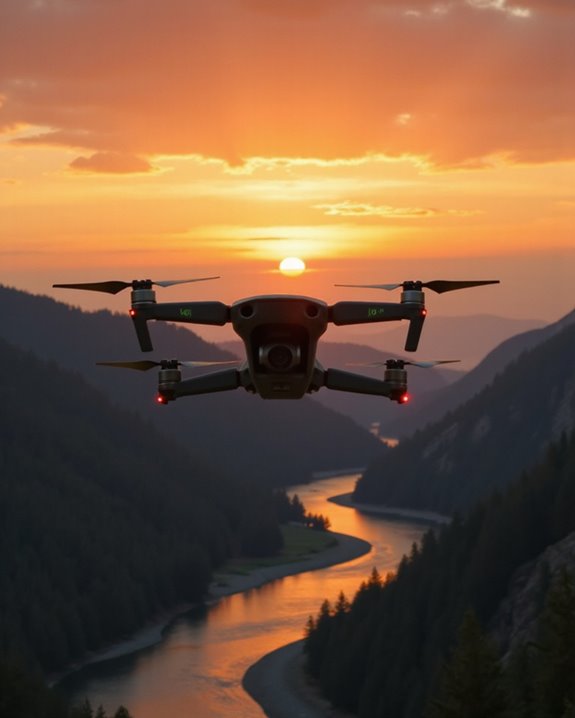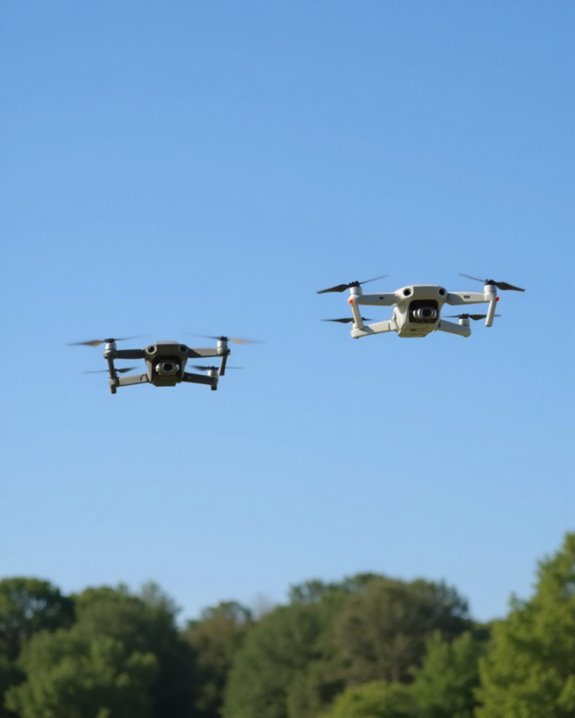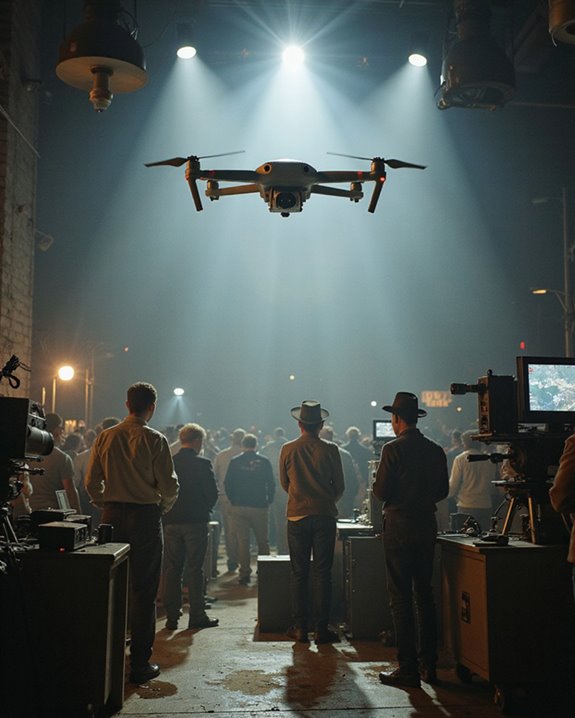Sam Kolder is almost inseparable from his DJI Air 2S drone—it’s his go-to for capturing those jaw-dropping, cinematic travel shots you see online! Packed with a 1-inch CMOS sensor and the power to shoot crisp 5.4K video, this drone makes even everyday scenery look like a Hollywood set. Sam’s also played with older DJI Mavic models and the DJI Avata for special projects, but the Air 2S is his favorite. Curious about how he gets those epic shots? Stick around!
Key Takeaways
- Sam Kolder primarily uses the DJI Air 2S drone for his travel vlogs and cinematic films.
- He has shown strong loyalty to DJI drones, evolving from older Mavic models to current favorites.
- The DJI Air 2S is chosen for its 1-inch CMOS sensor and 5.4K video capabilities.
- For special project demands, Sam occasionally uses the DJI Avata drone.
- He prefers non-FPV DJI drones due to their versatility in capturing time lapses and cinematic shots.
Sam Kolder’s Favorite Drone Models
When it comes to capturing incredible travel footage, Sam Kolder’s favorite drone models really steal the show! Over the years, his Preference Trends reveal a strong loyalty to DJI drones, especially the DJI Air 2S, which often takes center stage in his vlogs and adventure films. Model Evolution is clear in his gear bag—older DJI Mavic drones were once his go-to, but now the Air 2S leads the charge for everyday creativity. Sam also reaches for the DJI Avata when projects demand a special touch, though he usually skips FPV drones for general shoots. He chooses non-FPV models for their versatility, making them perfect for time lapses and hyperlapses. Clearly, Sam’s drone choices are as adventurous as his travels! For photographers looking to explore beyond DJI, drones like the Holy Stone HS600 offer professional 4K/30FPS cameras with advanced stabilization for stunning aerial shots.
Key Features of the DJI Air 2S
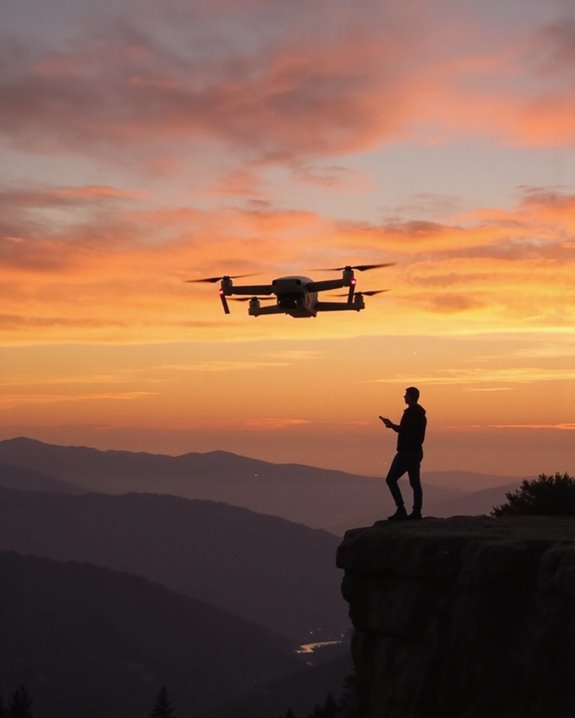
Ready to see what makes the DJI Air 2S such a favorite for Sam Kolder? This drone packs a punch with its 1-inch CMOS sensor, delivering crisp 20MP photos and stunning 5.4K video at 30fps—imagine the details you’d capture! The lens aperture is fixed at F2.8, which means you get bright, clear shots even when the light isn’t perfect. With an impressive ISO range of 100-12800, users can shoot in a variety of lighting conditions—no more blaming sunsets for bad footage! Advanced features like MasterShots, FocusTrack, and APAS 4.0 make creative flying and safe returns easy. Plus, who wouldn’t want a foldable drone that fits in a backpack but flies like a pro? Many DJI drones, including models comparable to the Air 2S, feature 3-axis gimbals to ensure smooth footage in challenging conditions.
How Sam Kolder Captures Cinematic Shots
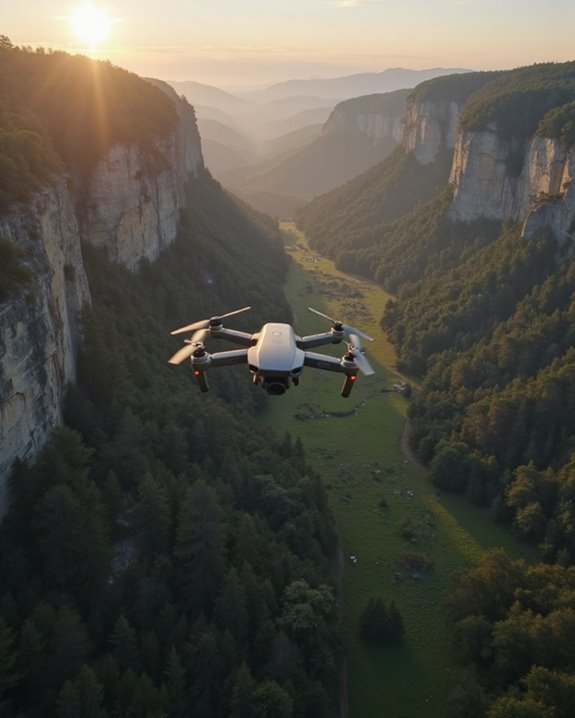
Ever wonder how Sam Kolder manages to make every drone shot look straight out of a movie? It’s not just fancy drones—it’s all about his approach! Kolder pays close attention to lighting techniques, often waiting for the golden hour to capture scenes bathed in soft, breathtaking light. He doesn’t just fly by the seat of his pants—each shot is planned to fit perfectly within a narrative flow, using smooth segues and sharp pacing that keep you glued to the screen. He’ll glide through narrow canyons or swoop over crashing waves, letting nature itself set the stage. By blending natural lighting, dynamic camera movements, and a keen sense of visual storytelling, Kolder transforms simple landscapes into unforgettable, cinematic adventures. No green screen required! Many top videographers rely on drones equipped with 3-axis gimbals to ensure ultra-stable and professional-quality footage.
Essential Drone Operation Techniques
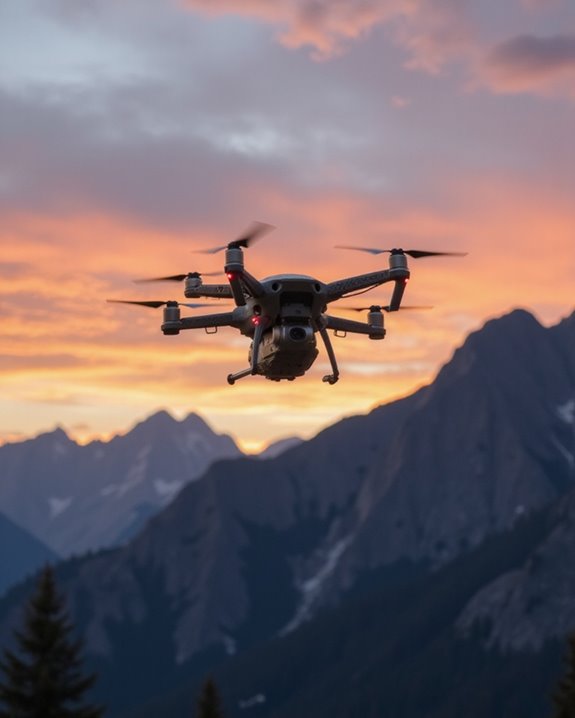
Although flying a drone might look as easy as playing a video game, there’s a lot more going on behind those cinematic shots! Before takeoff, pilots like Sam Kolder run through essential pre-flight checks—think of it as the drone’s version of stretching before a sprint. Throttle management and yaw control are key, especially when aiming for perfect hover stability, which keeps those sweeping landscape shots buttery smooth. Don’t forget sensor calibration; this step guarantees the drone interprets its surroundings accurately, avoiding wonky flight patterns or unexpected detours into trees! Pilots also need to adjust display settings, monitor battery levels, and update software regularly. Mastering these operation techniques transforms an ordinary flight into a seamless, jaw-dropping aerial adventure—no cheat codes required.
Recommended Gear and Equipment Updates
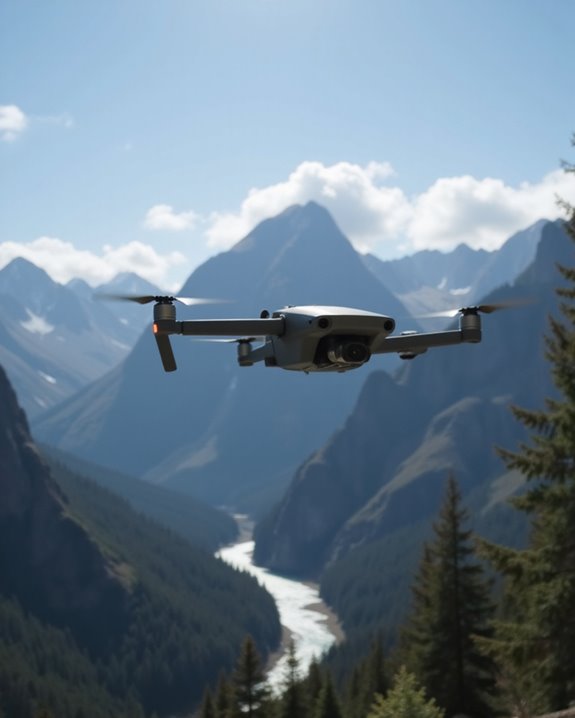
Once the basics of flying are nailed down, it’s time to talk gear—the stuff that turns a good flight into a truly legendary video! Sam Kolder keeps things sharp by focusing on lens upgrades, which means clearer, richer footage without swapping out the whole camera or drone. He’s all about squeezing every drop of quality from his DJI Mavic Air and DJI Avata FPV, so you won’t see him rushing for the newest gadget every month. Instead, Sam constantly explores software tools like DaVinci Resolve, Adobe Premiere Pro, and After Effects for editing magic. These aren’t just for cutting clips—they’re where the real creativity happens! Think of it as giving your footage a superhero cape, rather than buying a whole new superhero.
Learning Resources for Aspiring Drone Pilots
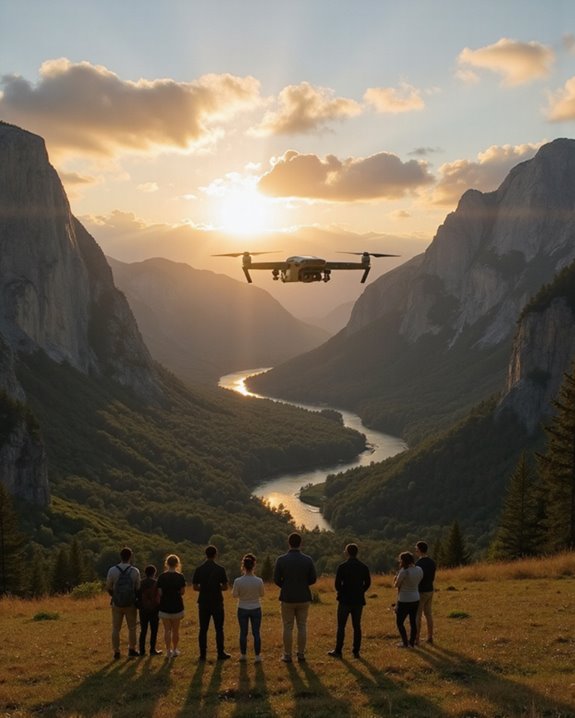
There’s a whole world of resources out there for aspiring drone pilots, and diving in can feel a bit like joining a secret club—except the handshake is a pre-flight checklist! Beginners can start with Online Courses covering basics like gentle stick movements, visual orientation, and those all-important pre-flight checks (trust us, you don’t want your drone’s first flight to be its last). Certification Guides, including the FAA’s own study materials, are essential if you’re eyeing commercial work—think FAA Part 107. Look for courses offering practice tests, live webinars, and even flexible payment plans. Want to master aerial photography or construction inspections? There are specialized guides and eBooks for that, too. Forums and Q&A sections help troubleshoot, while connecting you to a buzzing community of fellow pilots!
Frequently Asked Questions
How Long Does the DJI Air 2S Battery Last During Filming Sessions?
Who doesn’t crave longer Battery Life during creative sessions? For filming, the DJI Air 2S generally achieves a Flight Duration of 24 to 26 minutes per battery, though actual performance varies with environmental conditions and usage intensity.
What Editing Software Does Sam Kolder Use for His Drone Footage?
Sam Kolder utilizes Adobe Premiere Pro, After Effects, and DaVinci Resolve for editing drone footage. His workflow emphasizes advanced color grading and creative effects, with software tutorials offered to help others master these industry-standard tools and techniques efficiently.
Does Sam Kolder Use ND Filters on His Drone Cameras?
Over 80% of professional drone filmmakers use ND filters for cinematic quality. Sam Kolder consistently employs ND filters on his drone cameras, preferring them over filter alternatives to control exposure, achieve motion blur, and enhance outdoor footage aesthetics.
How Does Sam Kolder Handle Drone Regulations While Traveling Internationally?
When traveling internationally, the subject carefully researches customs procedures and airspace restrictions before operating drones. They secure required permits, plan flights to avoid restricted areas, and guarantee compliance with local regulations, prioritizing safety and legal adherence during content creation.
Has Sam Kolder Ever Lost a Drone During a Shoot?
Drone mishaps, such as a filmmaker losing a drone to strong winds during a mountain shoot, highlight the importance of recovery stories. No specific public record exists of Sam Kolder losing a drone during a shoot.

